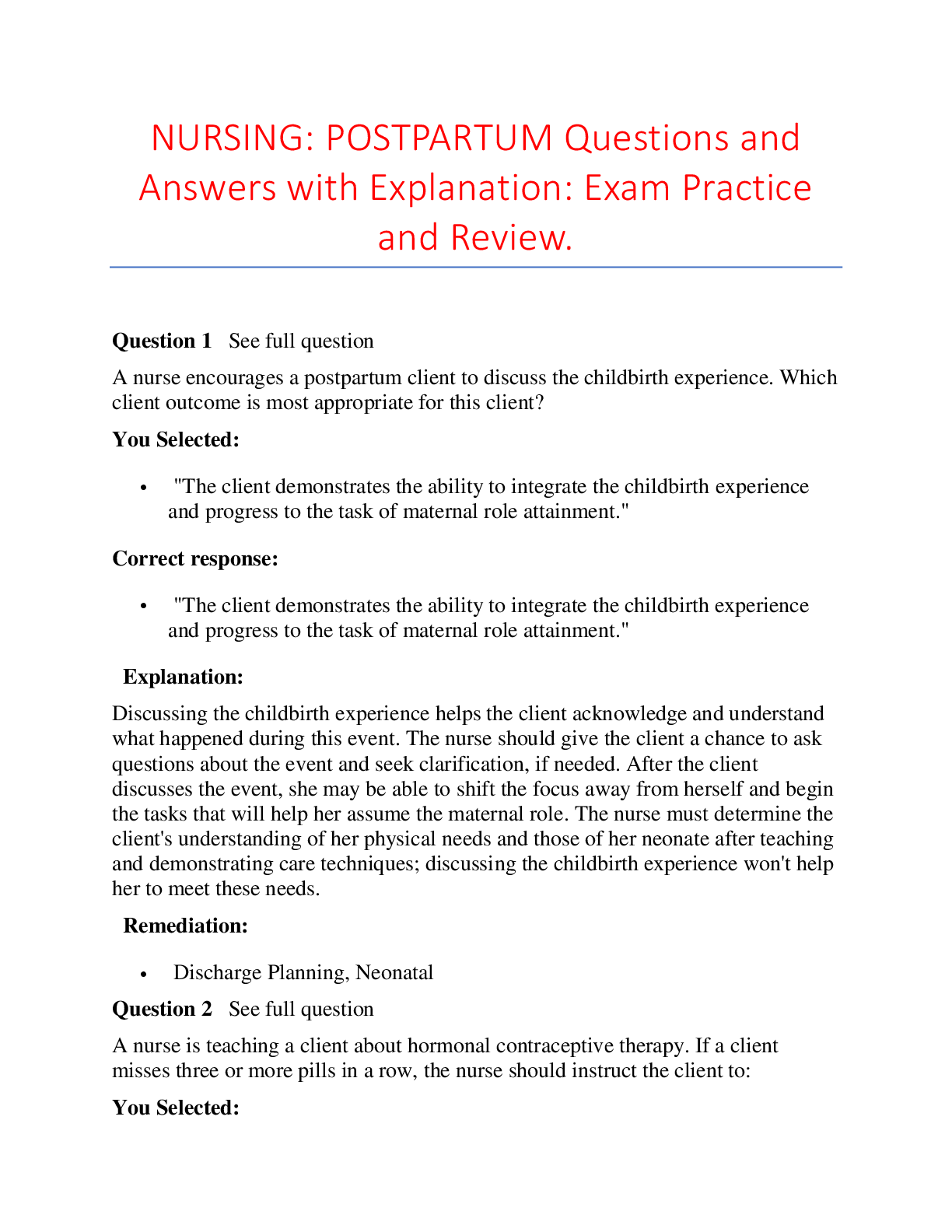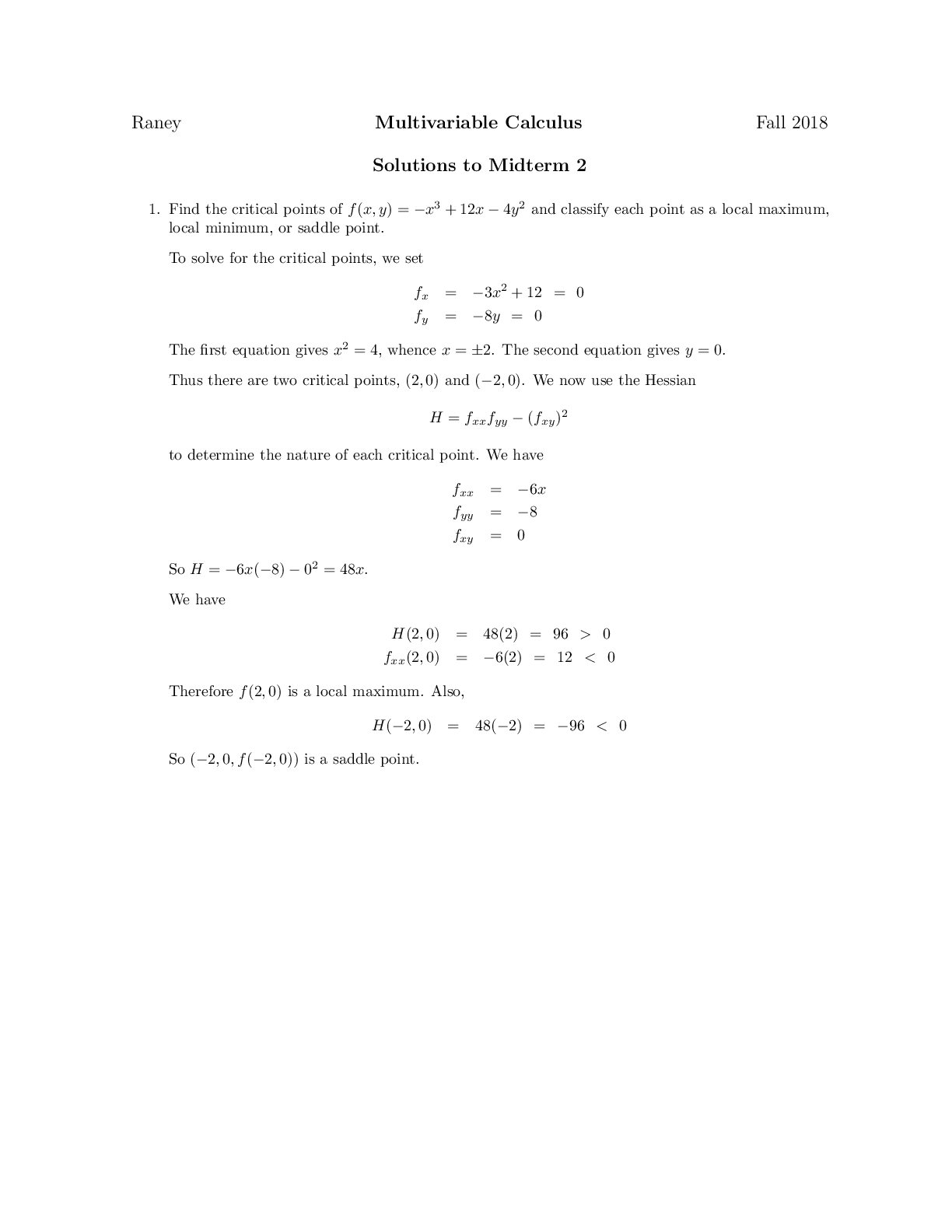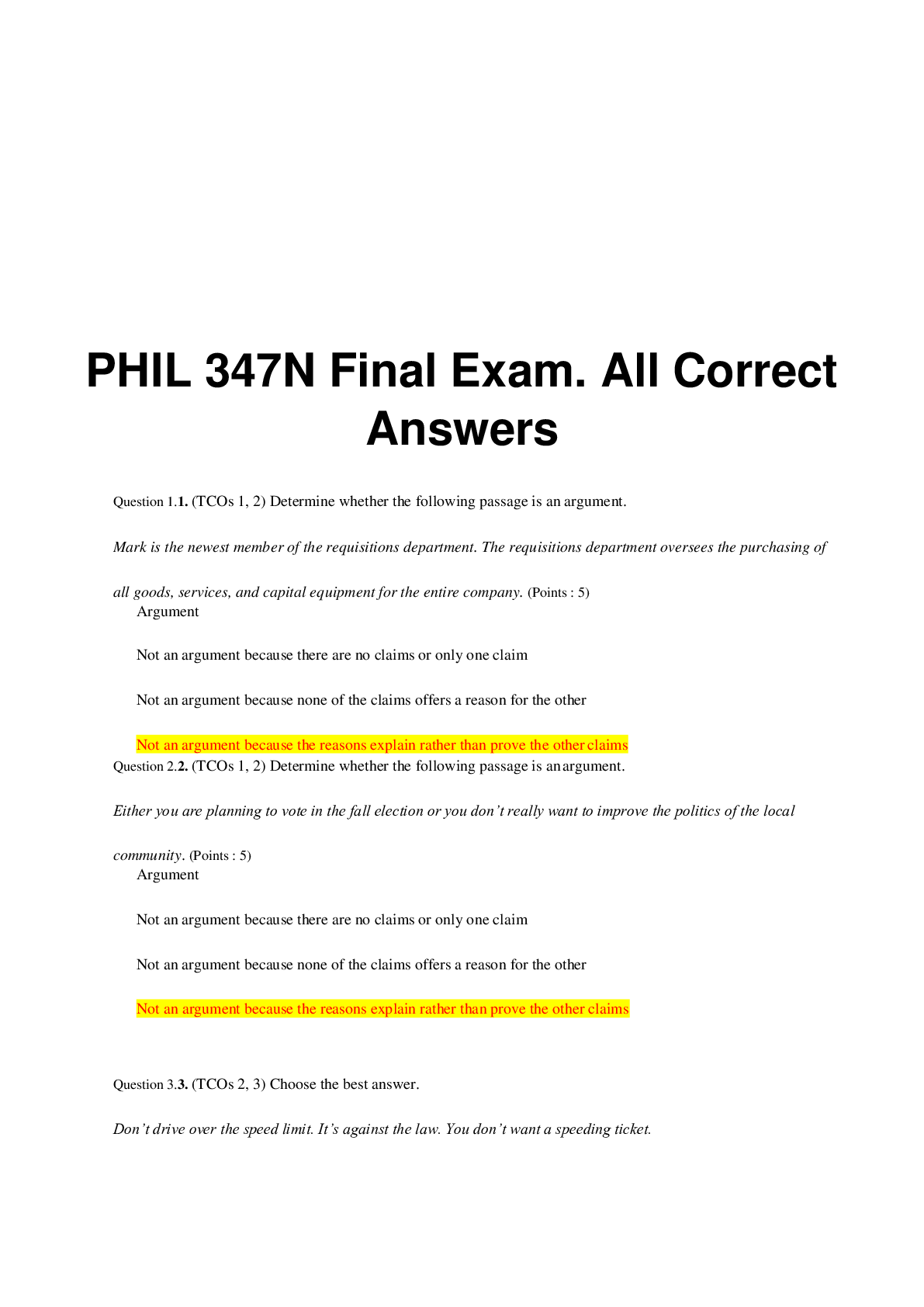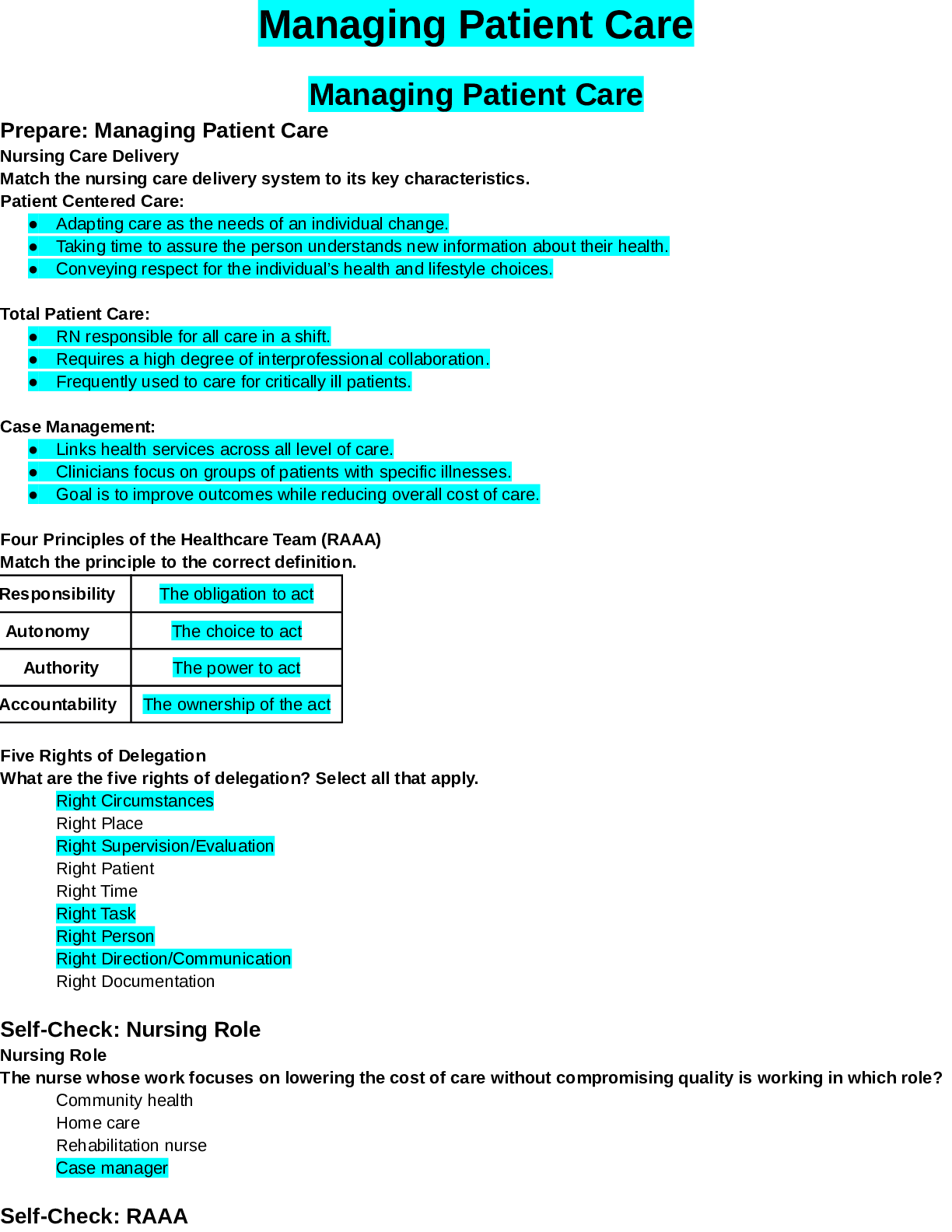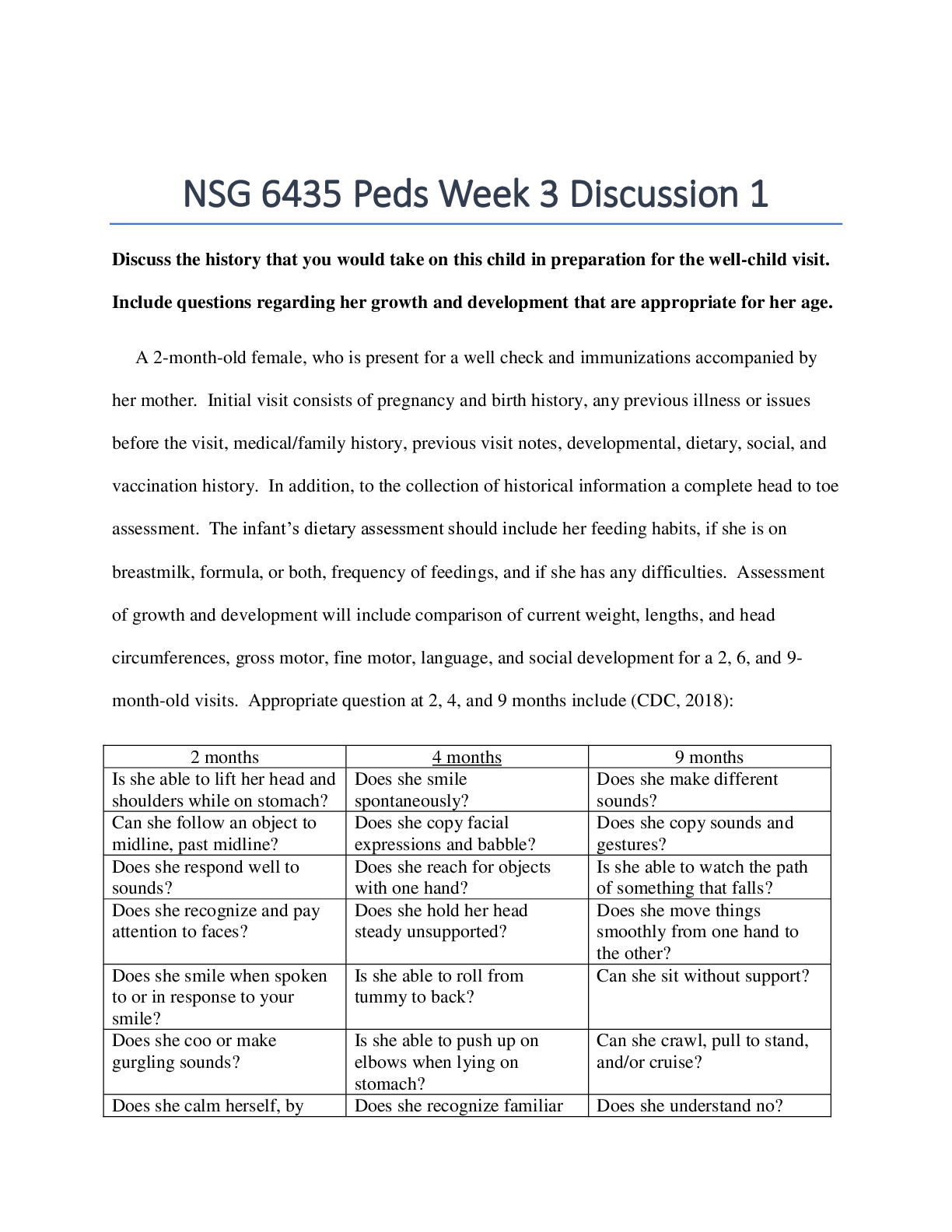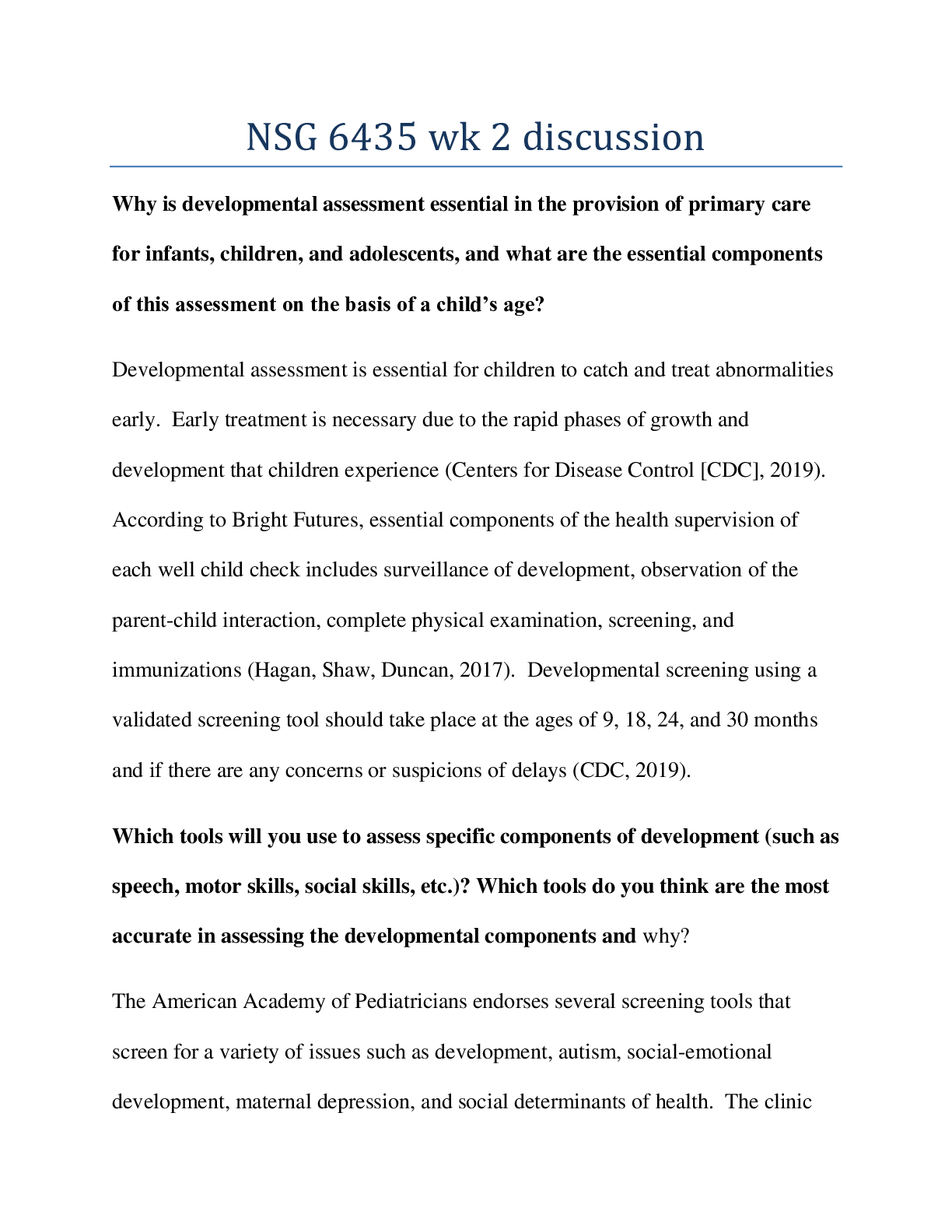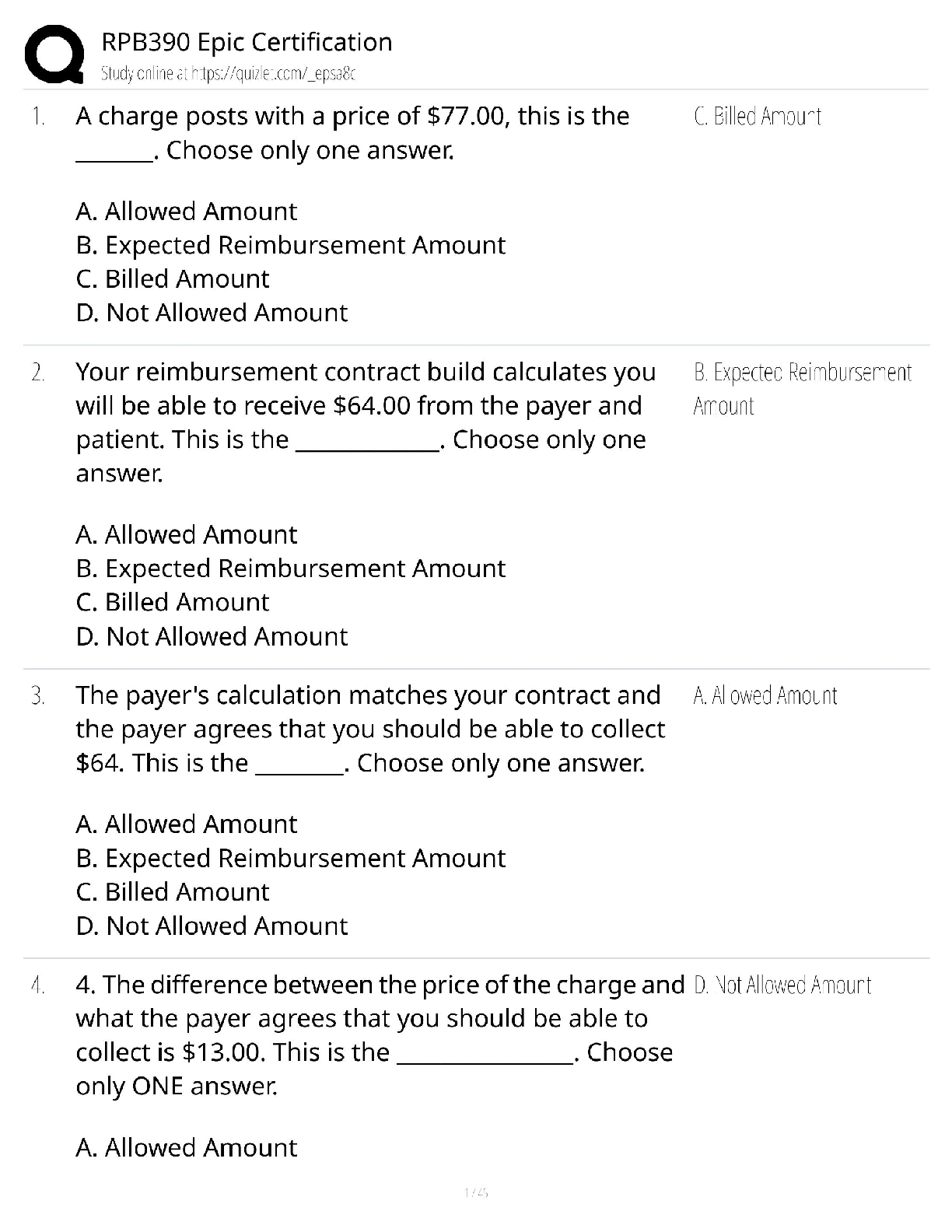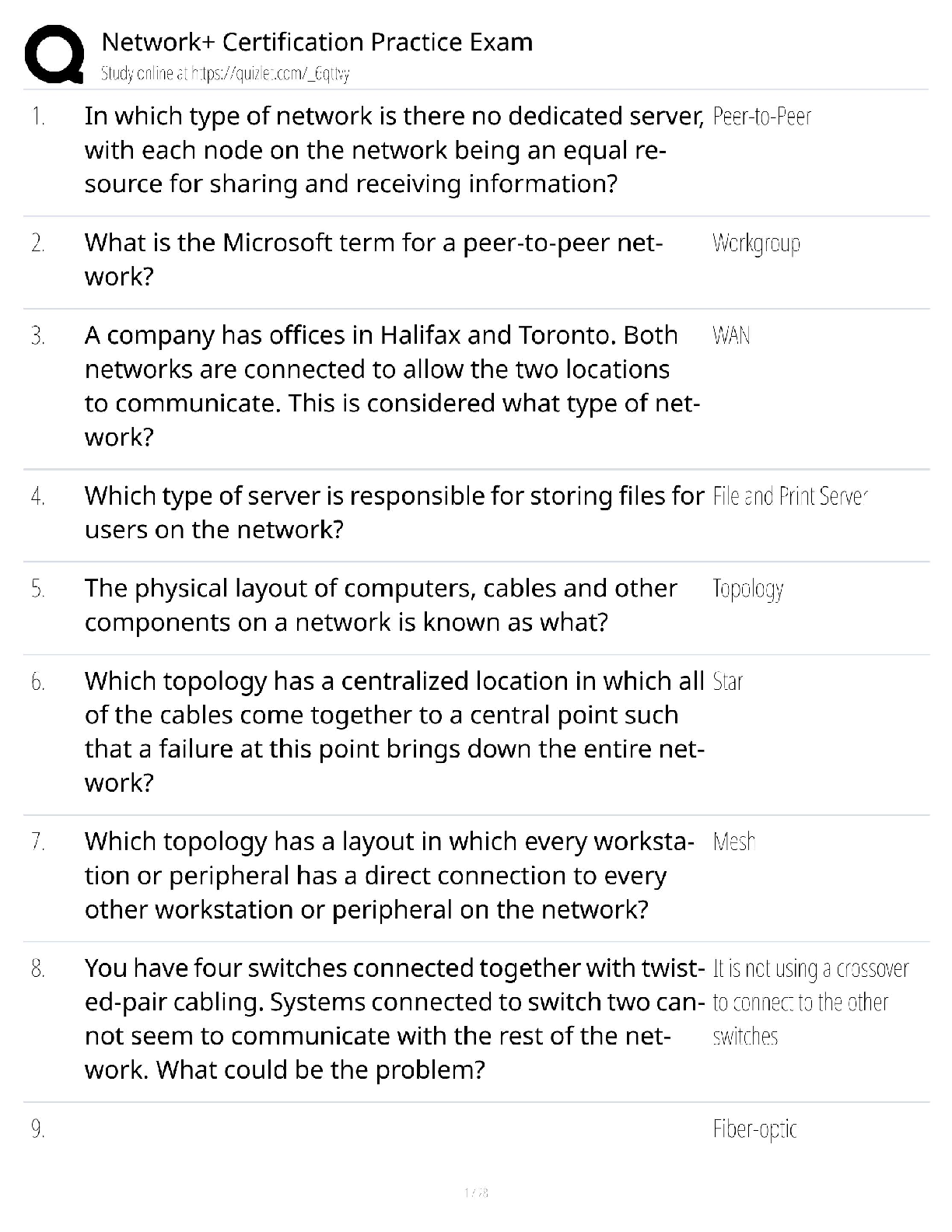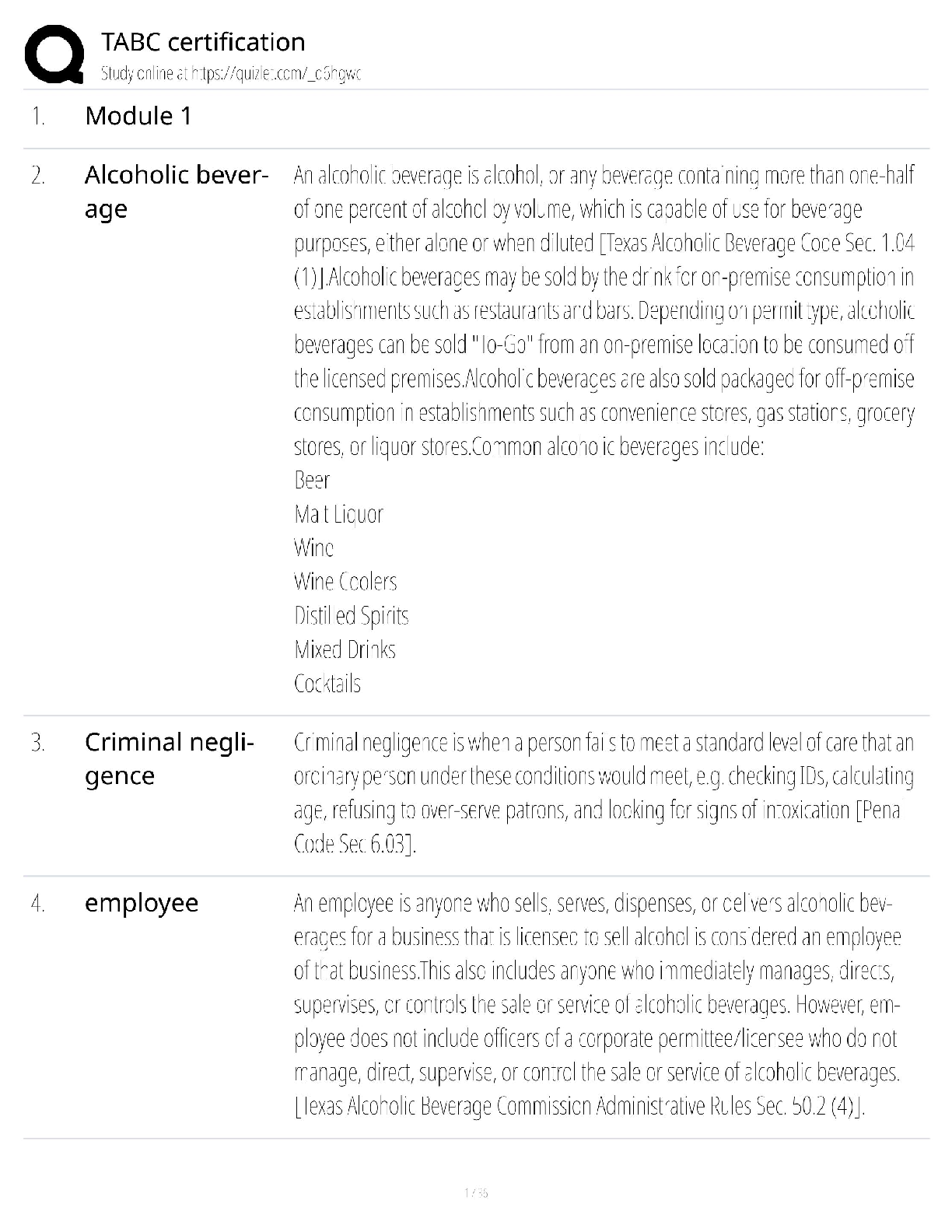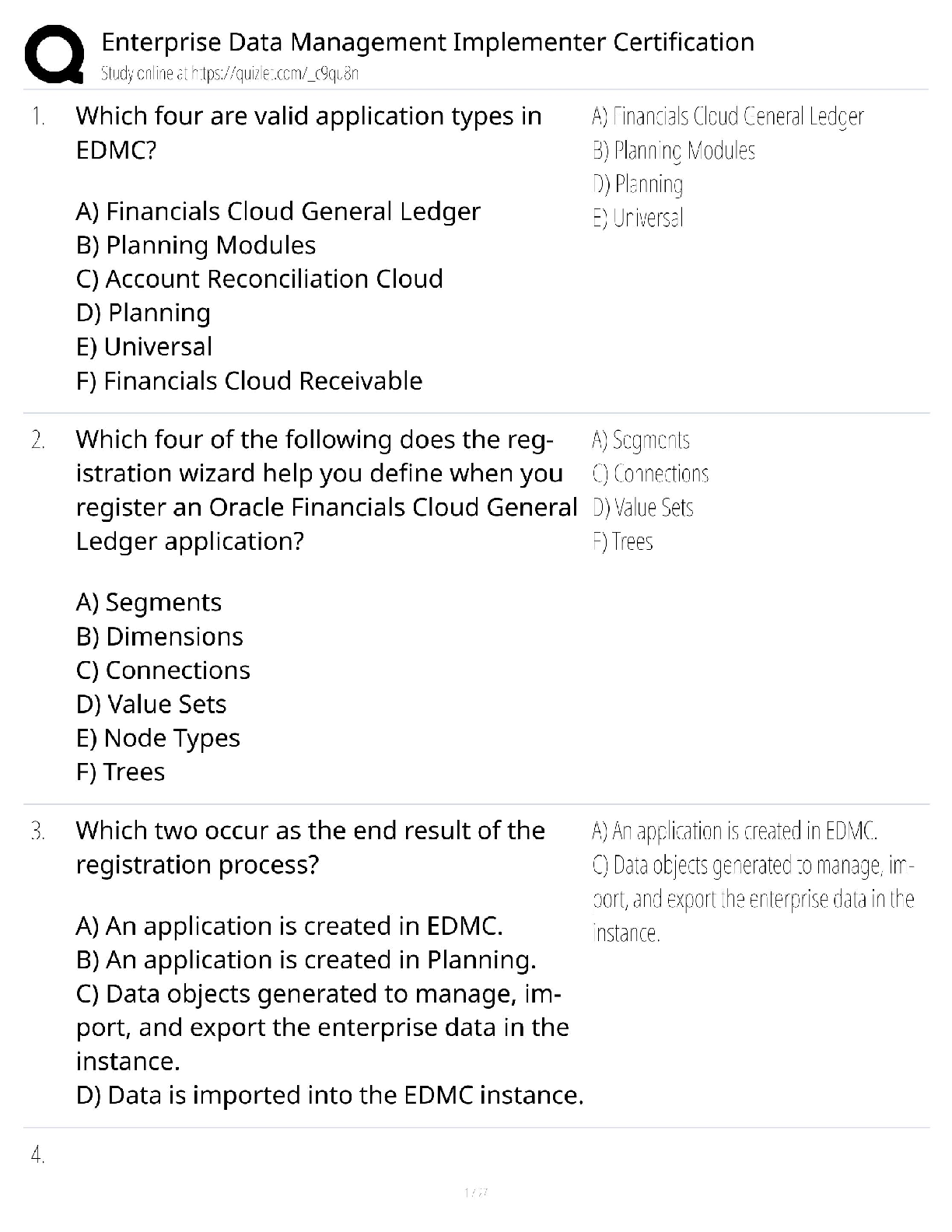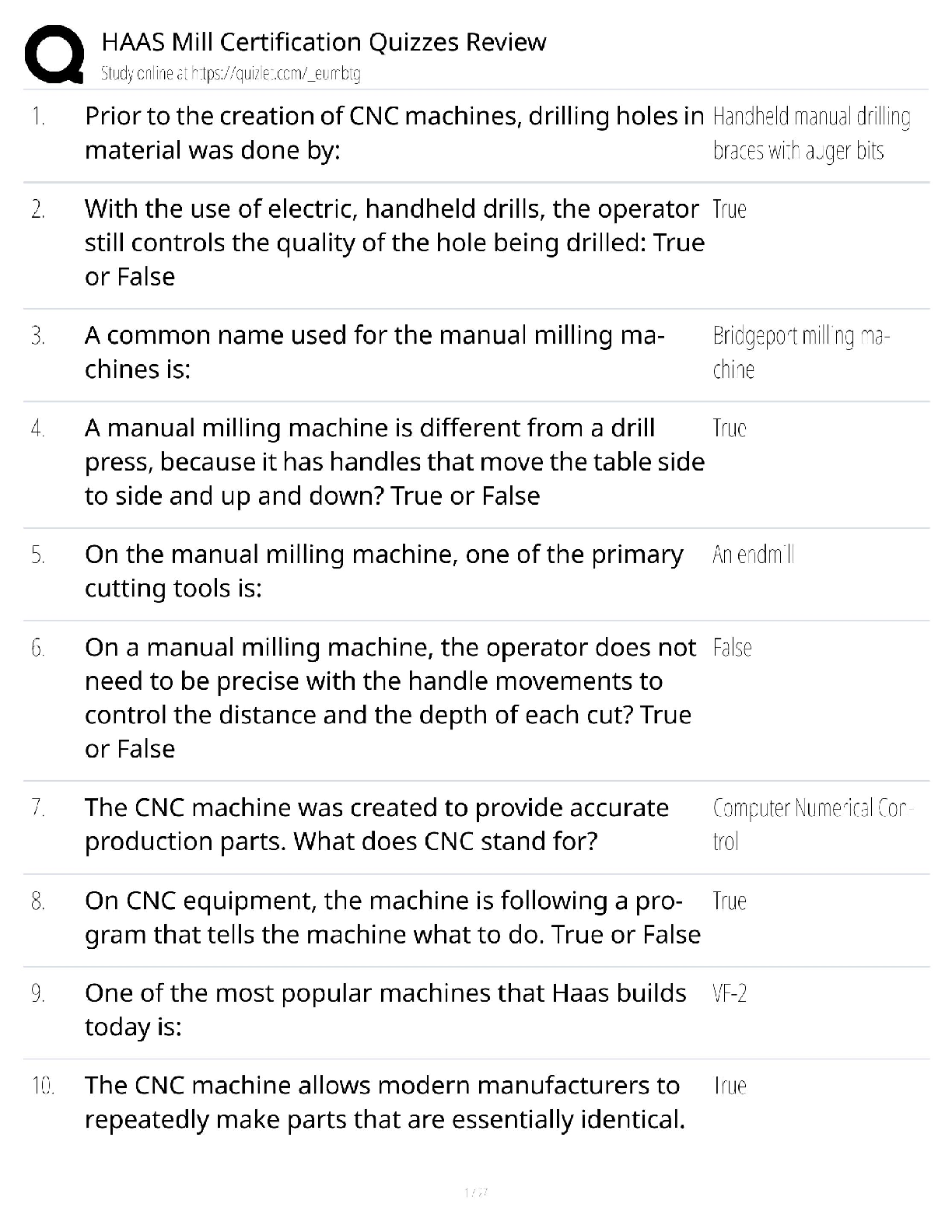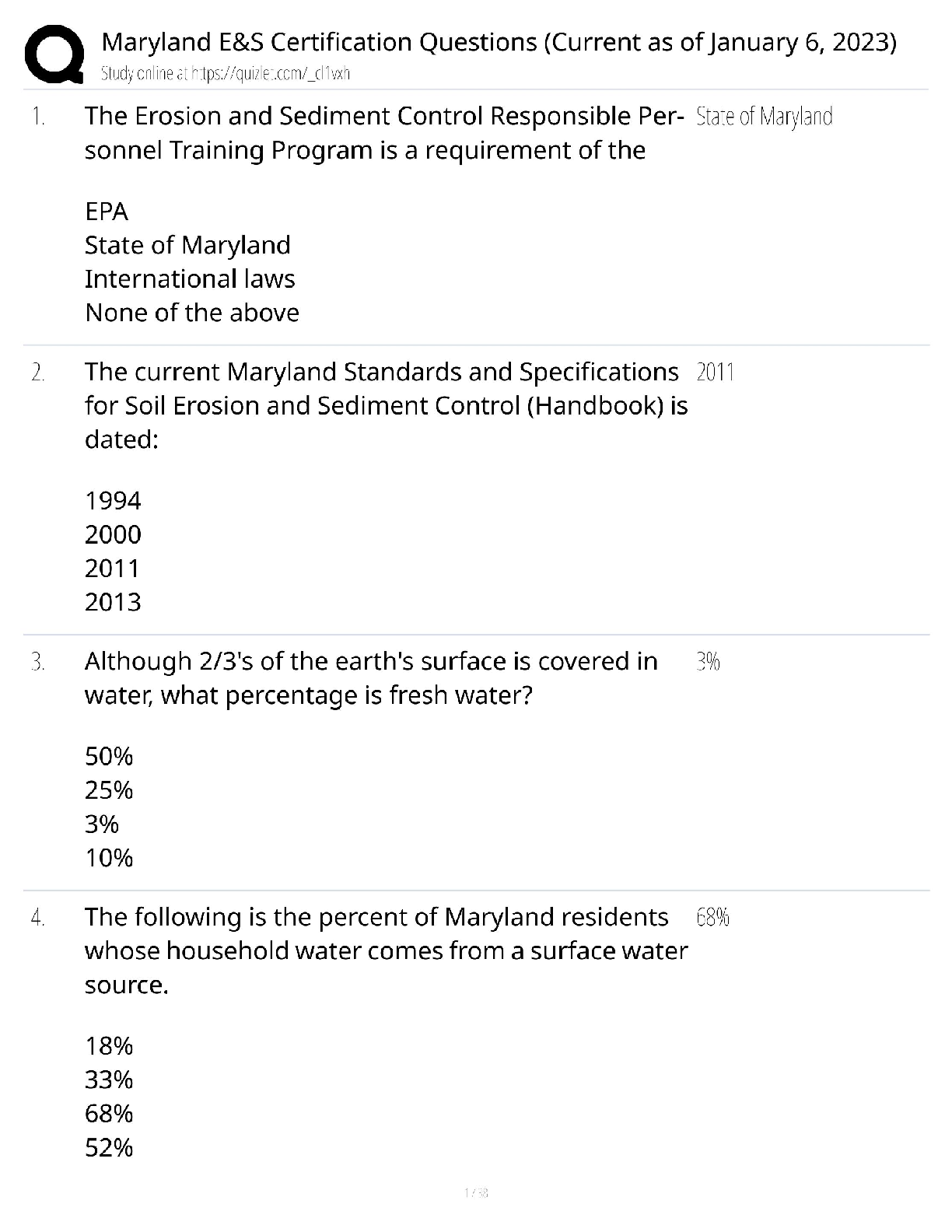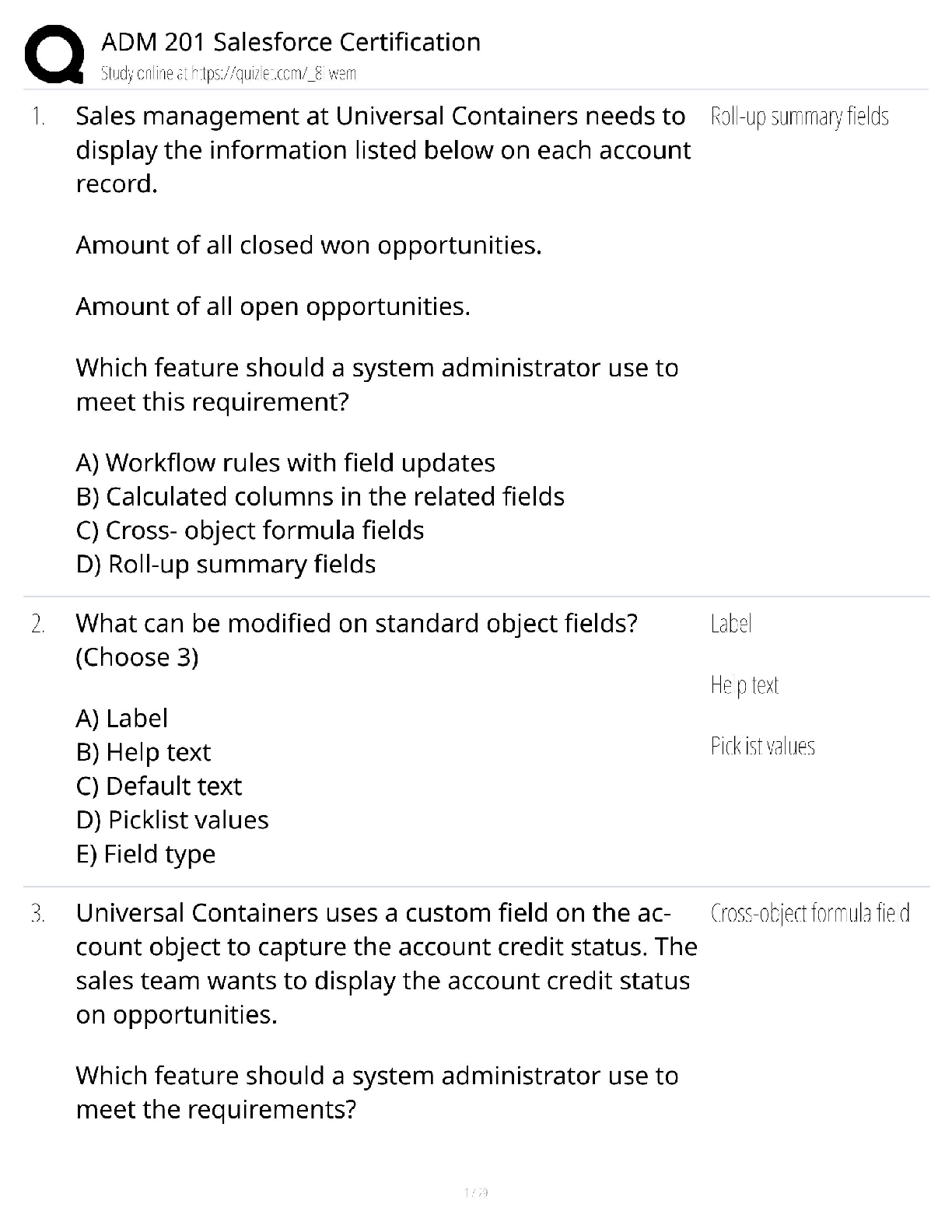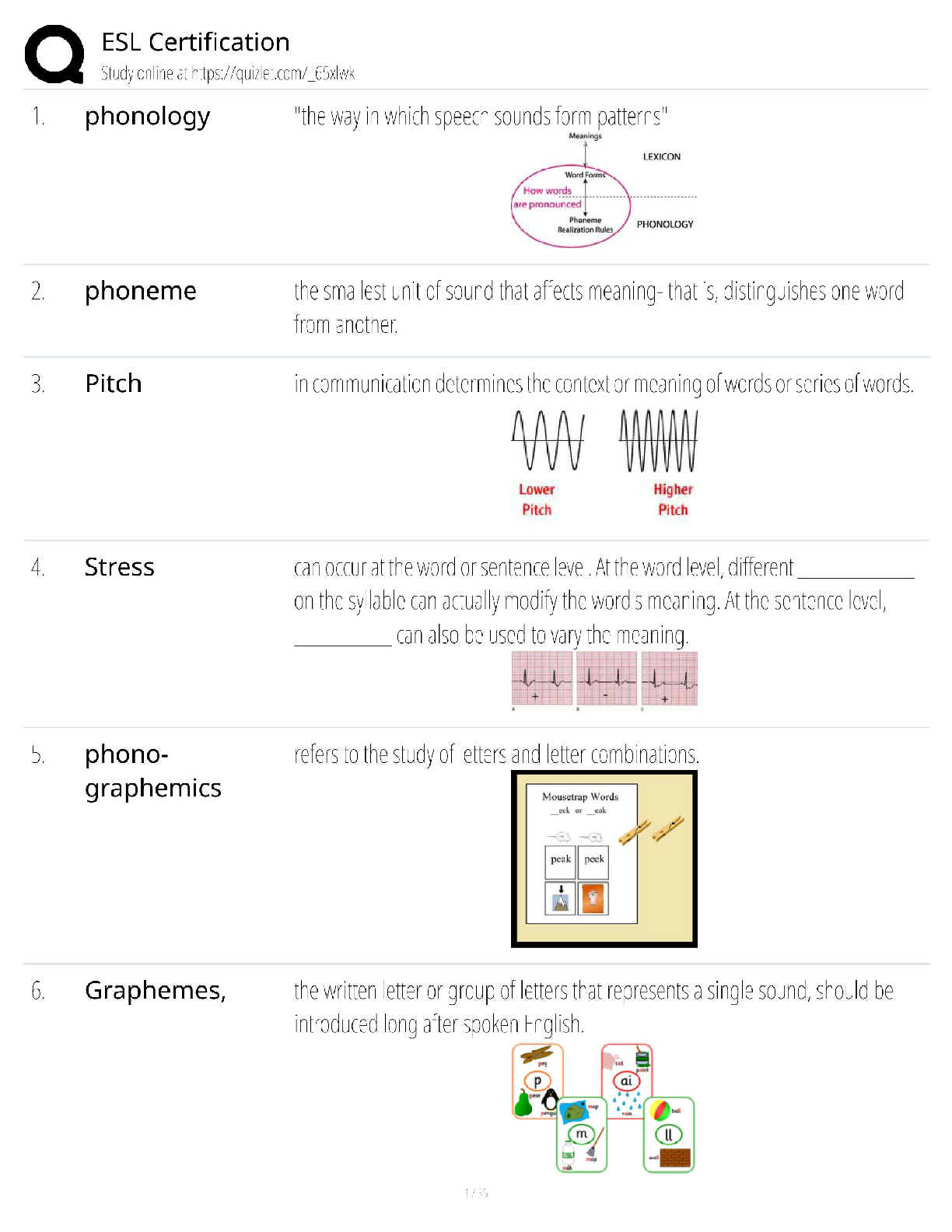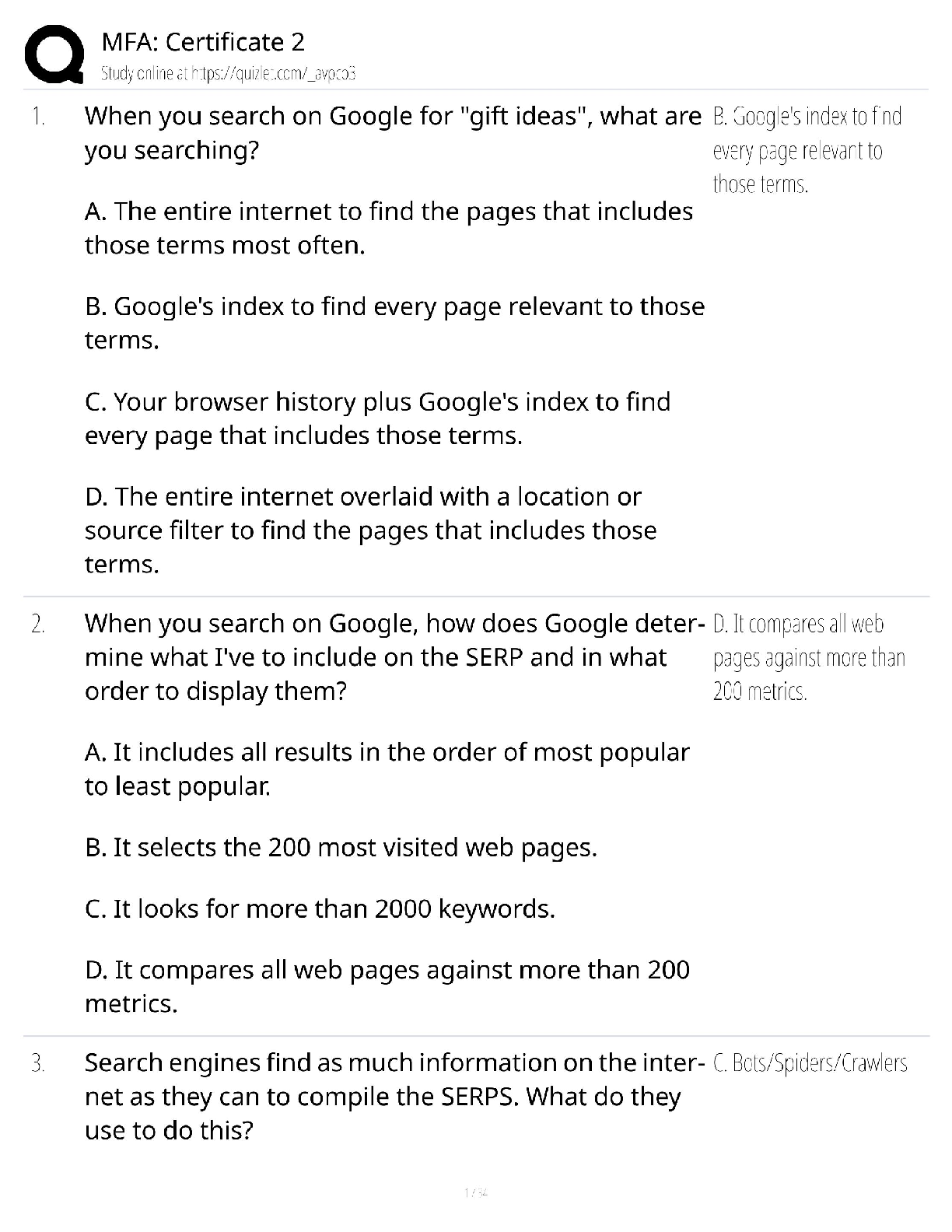Information Technology > QUESTIONS & ANSWERS > Systems Analysis and Design, Tenth Edition End of Chapter Solutions PART D Internet Resource Tools (All)
Systems Analysis and Design, Tenth Edition End of Chapter Solutions PART D Internet Resource Tools
Document Content and Description Below
IT 510 Systems Analysis and Design, Tenth Edition End of Chapter Solutions PART D Internet Resource Tools Toolkit Exercises s Questions 1. Are the Internet and the World Wide Web one and the sa ... me? Why or why not? The terms overlap, but they are not the same. The Internet has been described as a network of networks. The Internet uses electronic communications to connect computer networks and organizations around the world. On the other hand, the World Wide Web, usually referred to as the Web, contains billions of text and multimedia documents called Web pages that can be accessed by a Web browser. The physical and logical Internet made the Web possible, and enabled global participation. The Web has profoundly influenced the way we communicate, learn, and interact with society and one another, and these changes are continuing at an ever-increasing rate. (Page 622) 2. How do search engines differ from subject directories? Is one approach better than the other? Why or why not? A search engine is an application that uses keywords and phrases to locate information on the Internet and list the results of the search. Search engines use a specialized computer program called a spider that travels from site to site indexing, or cataloging, the contents of the pages based on keywords. The results are compiled into a database, so what you are searching is not the Web itself, but the contents of the search engine’s database. For most people, search engines are the workhorses of information gathering. Examples of search engines include Google.com, Ask.com, and the Yahoo! Search engine. A subject directory is a Web site that allows you to access topics by using a hierarchy, starting with general headings and proceeding to more specific topics. A subject directory collects and organizes Web sites in a top-down format, based on subjects and topics. A subject directory is an excellent starting point when you want an overview of a particular topic before proceeding to specific Web sites. Examples of subject directories include Yahoo!, About.com, and the Librarians’ Index to the Internet. (Page 624) 3. What is the invisible Web, and how large is it? The terms invisible Web, hidden Web, or deep Web are used to describe searchable databases that are unreachable by search engines. The invisible Web contains an enormous amount of information in university and government libraries, as well as thousands of specialized databases that are maintained by institutions and organizations around the world. Much of the invisible Web is open to the public, but some databases are password protected. Many sites allow guest access, but some areas can be accessed only by members of a specific group. You can access the invisible Web by using a search engine to locate a portal, or entrance, to a searchable database by including the word “database” as a required search term. For example, if you are searching for information about printer drivers, you could specify “printer drivers” AND database. The additional term will narrow the search results and increase the likelihood of finding searchable collections of printer drivers. You also can access the invisible Web by using specialized portals, such as completeplanet.com and invisibleweb.com, which list and organize searchable databases. (Page 625) 4. How would you plan an Internet research strategy? The information technology (IT) community is a vast collection of resources that IT professionals can use to research specific questions or obtain background information. As a systems analyst, you are a member of this community. The IT community includes numerous publications and online magazines, searchable databases, Web-based discussion groups, and mailing lists. Four important components of the IT community are corporate resources, government resources, professional resources, and online learning resources. (Pages 622-624) 5. How would you assess the quality of Internet research results? The quality of material on the Internet varies greatly. This means that a searcher must ask some specific questions when reviewing online content. Examples include the following: Source: Is the author identifiable? Does the author have expertise on the subject? You may need to trace back through Web site addresses or URLs to find biographical information, or do a separate search on the author’s name. Accuracy of the information: Does the information come from a commercial source that is offering its own solution? Is it from an association with an inherent bias? Often, it is very difficult to find completely objective information. Identifying biases and finding information from a variety of sources is a way to address this problem. Scope of the material: Is the information specific enough? If not, you should narrow and refine your search and seek additional resources until you locate the information you need. When you use a search engine, one way to do this is to perform a sub-search using the results of the initial search as a starting point. Currency of the material: How old is the information? Is the topic static or dynamic? In the IT world, technology changes very quickly. If you locate information that appears to be out of date, you might seek more recent data to ensure that your results are valid. Look and feel of the material: If the site is designed in a logical manner and offers valueadded links to worthwhile pages and resources, do not be overly concerned with style – some excellent material is created by authors and producers who focus on content, not design. (Pages 625-626) 6. What are sponsored links? Could they affect the quality of your search results? How? The information technology (IT) community is a vast collection of resources that IT professionals can use to research specific questions or obtain background information. As a systems analyst, you are a member of this community. The IT community includes numerous publications and online magazines, searchable databases, Web-based discussion groups, and mailing lists. Four important components of the IT community are corporate resources, government resources, professional resources, and online learning resources. (Pages 625) 7. What is Boolean logic? Provide three examples using everyday terms. [Show More]
Last updated: 3 years ago
Preview 1 out of 11 pages
.png)
Buy this document to get the full access instantly
Instant Download Access after purchase
Buy NowInstant download
We Accept:

Also available in bundle (1)
Click Below to Access Bundle(s)

IT 510 Systems Analysis and Design, Tenth Edition End of Chapter Solutions CHAPTERS 1-12 + PARTS A, B, C & D Questions and Solutions.
IT 510 Advance IT - Systems Analysis and Design, Tenth Edition End of Chapter Solutions Systems Analysis and Design, Tenth Edition End of Chapter Solutions: Chapter 4 Requirements Modelling. Sys...
By QuizMaster 3 years ago
$44.5
14
Reviews( 0 )
$7.00
Can't find what you want? Try our AI powered Search
Document information
Connected school, study & course
About the document
Uploaded On
Aug 22, 2022
Number of pages
11
Written in
All
Additional information
This document has been written for:
Uploaded
Aug 22, 2022
Downloads
0
Views
150


